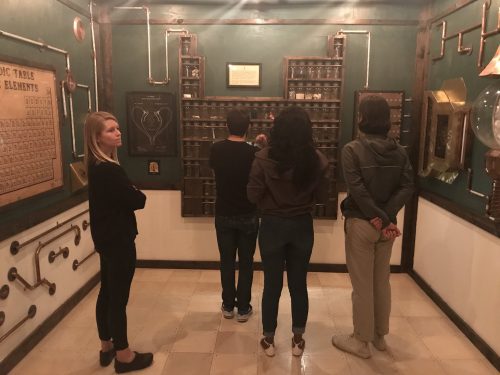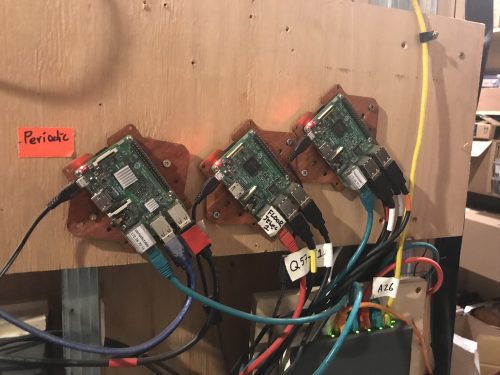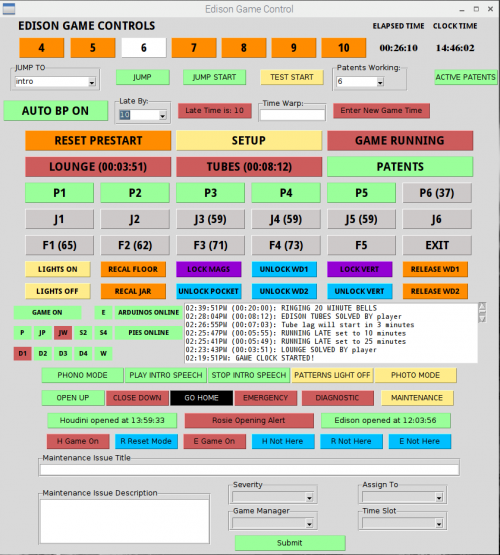A few Mondays ago, the Raspberry Pi North America team visited a very special, Raspberry Pi–powered Escape Room in San Francisco. Run by Palace Games, the Edison Escape Room is an immersive experience full of lights, sensors, and plenty of surprises. This is the team’s story of how they entered, explored, and ultimately escaped this room.

At World Maker Faire this year, our very own social media star Alex Bate met Jordan Bunker, one of the Production Artists at Palace Games. Emails were sent, dates arranges, and boom, the Raspberry Pi North America team had to face the Edison Escape Room!
Escape rooms
In case you’re not familiar, an escape room is a physical adventure game in which players solve a series of puzzles and riddles using clues, logic, and strategy to complete the game’s objectives. Many escape room designers use physical computing to control the many sensors and triggers involved in the player experience.

The team vs Edison
Upon entering the Edison Escape Room, my team and I quickly realized that we were within a complex system built like a giant computer! So even though it was our first-ever time in an escape room, that would not be a disadvantage for us.

Our goal was to accomplish a variety of tasks, including solving many puzzles, looking for hidden clues when anything could be a clue, completing circuits, moving with the floor, and getting a bit of a workout.
The true test, however, was how well we communicated and worked with each other — which we did an awesome job at: at times we split up the work to effectively figure out the many different puzzles and clues; there was a lot “try it this way”, “maybe it means this”, and “what if it’s supposed to go that way” being yelled across the room. Everyone had their Edison thinking hat on that day, and we were so ecstatic when we completed the last challenge and finally escaped!

The inner workings
After escaping the room, we got the chance to explore behind the scenes. We found a local network of many Raspberry Pis that are coordinated by a central Raspberry Pi server. The Python Banyan framework is the connective tissue between the Raspberry Pis and their attached components.

The framework facilitates the communication between the Pis and the central server via Ethernet. The Raspberry Pis are used to read various types of sensors and to drive actuators that control lights, open doors, or play back media. And Raspberry Pis also drive the control panels that employees use to enter settings and keep tabs on the game.
“Raspberry Pi keeps us going. It’s the heart and soul of our rooms.” – Elizabeth Sonder, Design Engineer & Production Manager
We highly recommend heading over to Palace Games and exploring one of their many escape rooms. It’s a great team-building exercise and definitely allows you to learn a lot about the people you work with. Thank you to the Palace Games team for hosting us, and we hope to return and escape one of their rooms again soon!
Website: LINK
Schreibe einen Kommentar
Du musst angemeldet sein, um einen Kommentar abzugeben.